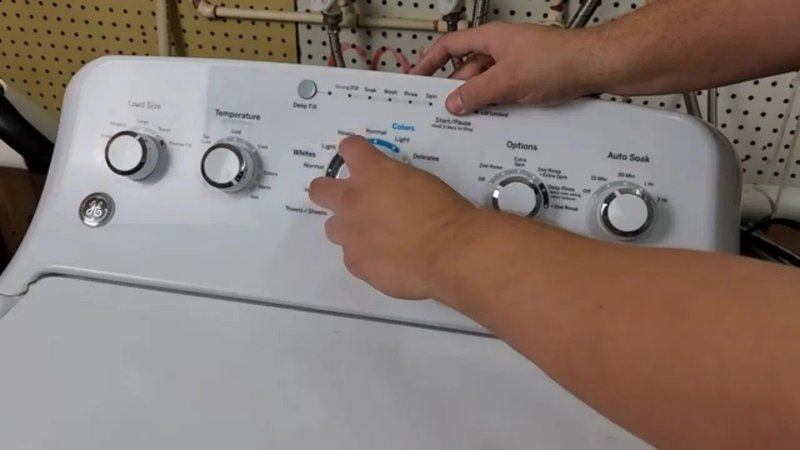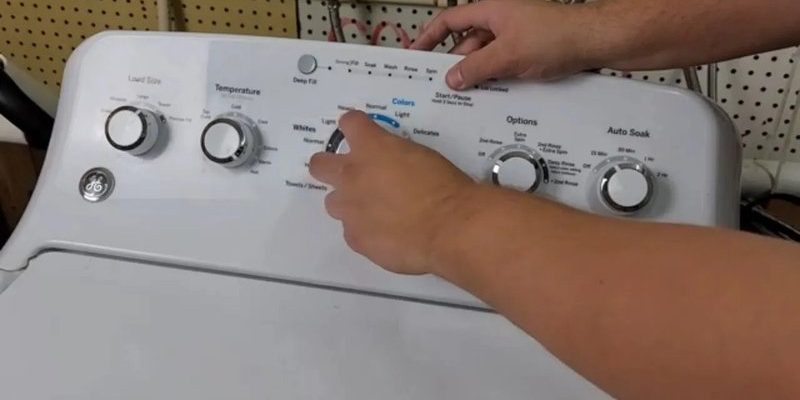
The first thing you might think is that your washer is broken, and you’re going to need a costly repair. But don’t worry, that’s not always the case! Often, this error can be resolved with a simple reset, much like restarting your phone when it freezes. Resetting your machine is a straightforward process that most homeowners can tackle on their own without the need for a professional. So, let’s delve into what steps you need to take to reset your GE washing machine and have it running perfectly again.
Understanding the F1 Error Code
Before jumping into the reset process, let’s take a moment to understand what the F1 error is really telling us. The F1 code is a signal from your washing machine’s control board to indicate it’s overwhelmed. It might be due to a surge, a glitch, or even accumulated errors over time. Think of it like when you have too many tabs open on your computer, causing it to slow down and act up. The control board controls all the washing machine’s functions, so if it’s not communicating properly, your machine can’t operate as it should.
The F1 error doesn’t necessarily mean there’s a physical problem within the machine. Sometimes, it’s just a software hiccup. In some cases, such as if you’ve recently experienced a power surge during a storm, this can cause the control board to misread some signals. Alternatively, if you’ve been washing loads back-to-back, the machine might need a break. Essentially, the F1 code is giving you a heads-up to check things out. If left unchecked, though, it could prevent your machine from working efficiently or at all.
So, what happens if you ignore this error? Over time, ignoring it could lead to more significant problems, like the washer stalling mid-cycle or failing to start. Therefore, it’s crucial to address it promptly to avoid further disruption to your laundry routine. Luckily, a simple reset can often clear away these worries without any tools or technical expertise.
How to Perform a Basic Reset
Let’s move on to the actual reset process. This is your first line of defense when dealing with the F1 error code. Imagine it like turning your washing machine off and on again; it’s a universal fix-it trick that’s surprisingly effective. The basic reset involves unplugging the machine to clear any temporary glitches in the system. It’s like giving it a brief nap to shake off the cobwebs.
Start by safely unplugging your washing machine from the power outlet. Make sure your hands are dry and take care while handling electrical appliances to avoid any chance of a shock. Once unplugged, give the machine a couple of minutes to rest. This downtime helps the control board reset, clearing stored errors. After about five minutes, plug the machine back in and turn it on. Try running a short cycle to see if the error code has cleared.
If the F1 error code reappears, don’t panic just yet. There are a few more steps we can take to troubleshoot further. But, in many cases, this basic reset often solves the issue. It’s a simple process, but like rebooting a computer, it can refresh the system and often work wonders.
Advanced Reset Techniques
If the basic reset hasn’t worked, don’t throw in the towel just yet! Advanced reset methods might be necessary, particularly if the machine has persistent issues. Let’s think of this as a deeper reboot, where we dive a bit more into the machine’s settings and controls.
One advanced method involves resetting the machine’s software back to its default factory settings. Refer to your user manual for specific instructions related to your model, as these can vary. This process usually involves pressing a sequence of buttons, similar to entering a cheat code in a video game. For instance, certain models require you to press the “Start” and “Pause” buttons simultaneously while the machine is off, holding them down for a few seconds until the display blinks.
If you still see the F1 error, it might be time to check for underlying issues with the control board itself. In rare cases, physical damage or a faulty board might need addressing by a professional technician. However, even then, you’ll be armed with the knowledge that you’ve done all you could on your own, which can save you time and money.
Preventing Future Errors
You’ve successfully reset your washing machine, but let’s make sure we keep that F1 error at bay. Just like taking care of a car prevents breakdowns, simple maintenance can keep your washing machine running smoothly. Start by ensuring your machine isn’t overloaded. Cramming it full of clothes can strain the system, just like trying to stuff too much into a suitcase.
Regularly inspect the power cord for any signs of wear and tear, ensuring your machine is plugged into a stable power source. In case of frequent power surges in your area, consider installing a surge protector. Additionally, giving your machine a little rest between large loads can help it cool down and reset naturally, much like giving yourself a break after a hard workout.
Lastly, don’t forget to clean the machine’s filter and drum periodically. Dirt and debris buildup can eventually lead to performance issues. By taking these preventative steps, you can prolong the life of your washing machine and reduce the chances of encountering error codes.
In summary, seeing that F1 error code might feel daunting initially, but with a few simple steps, you can reset your GE washing machine and restore its function. With a little patience and regular maintenance, your laundry days will run smoothly without a hitch!
